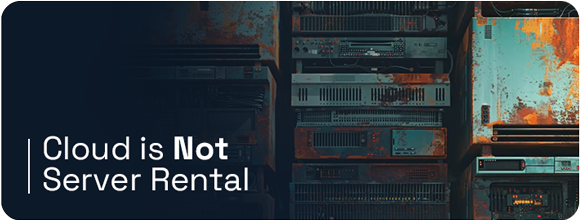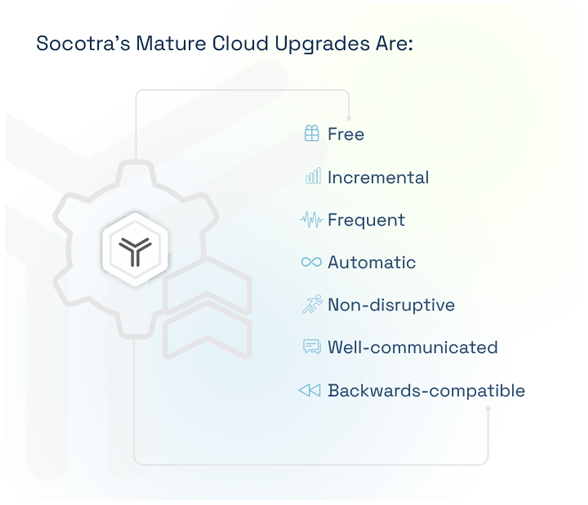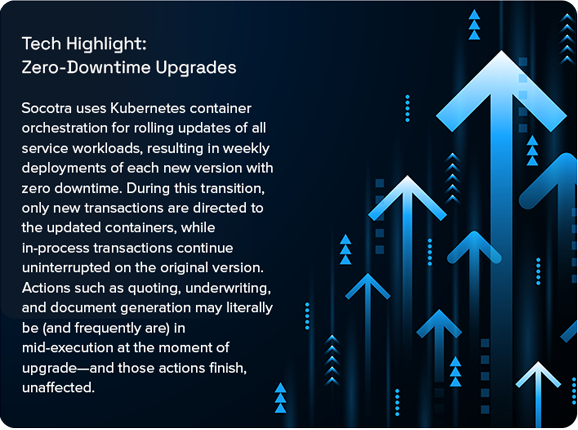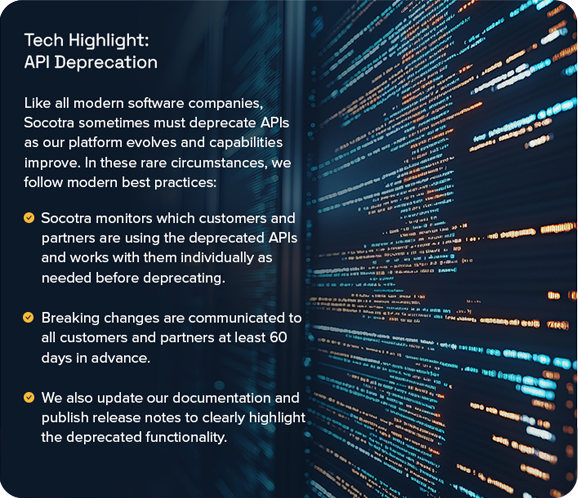Are you using cloud, or just renting virtual servers? The difference matters. A Lot.

You Can’t Cut Corners.
Most insurance platforms were never designed for the cloud. They were designed to operate from the insurer’s data centers. Cloud providers such as Amazon Web Services (AWS), Azure, and Google Cloud rent virtual servers that any software can install on–including legacy insurance software. Many legacy providers are doing exactly this, and calling it “cloud,” but it’s really legacy technology on a rented server.
This rented server approach isn’t without benefit because it allows an insurer to scale down their on-prem data centers and reduce staff. However, it misses most of what cloud has to offer.

Questions to ask when evaluating “cloud” platforms:
How often do upgrades occur?
Is there system interruption during upgrades?
Can I get an evaluation license?
Does it scale automatically when demand increases?
Are uptime numbers published?
Always on the Latest Version. Always.
“Which version of LinkedIn are you using?” – Nobody, ever.
Some software needs updating; some doesn’t. We update our smartphone apps, because they run on our local devices, but we don’t think about upgrading a social network or news website because we’re merely visiting via browser. When we visit the site, it appears in the latest version. It just keeps going, and effortlessly along the way bugs are fixed, features are added, and security vulnerabilities are repaired.

The Problem With “Rented Server” Cloud Upgrades
Upgrading “rented server” cloud core systems is a complicated process that can take years and cost millions in service fees. That’s because these core systems have many customizations that need rewriting for the new version. Also, when upgrades aren’t backwards compatible, the upgrade process can require complex synchronization with other systems.
With such slow and expensive upgrades, most insurers eventually freeze their system version, forgoing new features and fixes. As a result, they continue using outdated, unsupported software, which limits agility, slows product development, and raises security risks.
To make matters worse, many deployments are already one or more versions behind before they’re even live in production.
How Does Socotra Make Upgrades Easier?
Socotra champions the philosophy of small weekly updates, without impacting client deployments or their uptime. This is achieved by running one version of the system for all clients with a public library of backwards-compatible APIs.

One Version For All
Vendors supporting multiple customized versions of their software must maintain multiple codebases, which divides and dilutes R&D and support resources. Even many cloud-only vendors create customized instances for individual clients, resulting in similar issues.
Socotra takes a different approach. As a true cloud-native core platform, all clients run on the exact same version. Socotra takes feature requests from all and makes customizations for none. With this approach, Socotra customers are always receiving new benefits, and are never left behind.
Backwards Compatibility
Socotra updates without disrupting integrations or data, so no regression testing is needed. These backwards-compatible updates are frequent and incremental, the standard approach for high-reliability platforms like Gmail, Zoom, and literally every major website—and that’s why they keep working!
Socotra’s published and highly-granular APIs serve as a contract, resulting in a uniquely stable platform insurers can trust and build upon. This approach offers the best of both worlds: insurers can innovate and differentiate without disconnecting themselves from future upgrades.

Resilient Design For Business Continuity.
In 2023 and 2024, Socotra customers upgraded 100 times while experiencing less than 60 minutes of total downtime. This industry-leading reliability is made possible by Socotra’s highly resilient cloud-native design, unique among insurance core system providers.


Socotra is composed of many stateless services running redundantly across Availability Zones and automatically scaling to meet demand.
While this type of service redundancy is a standard practice among modern cloud platforms, Socotra is the only insurance core system that offers it. This approach allows Socotra to deliver the highest reliability and performance in the industry.

Socotra employs an Active/Active recovery type across data centers, supporting automatic failover and load balancing, which further ensures high availability and resilience.
This design supports robust disaster recovery capabilities, such as a Recovery Point Objective (RPO) and a Recovery Time Objective (RTO) of less than 5 minutes for single Availability Zone disruptions, with options for enhanced resilience in multi-region scenarios.
Finally, Socotra’s backup strategy includes monthly automated restoration tests, because as seasoned CIOs like to say: “If your disaster recovery strategy isn’t tested regularly, then you don’t have a disaster recovery strategy.”
Scale Up or Down to Meet Real-Time Demand.
Socotra’s cloud-native capabilities, such as autoscaling and stateless service design, further contribute to our industry-leading performance.
Autoscaling
Mature cloud platforms like Socotra support autoscaling, which means automatically spinning up and shutting down servers in response to real-time demand. This capability allows Socotra to meet peak demand without sacrificing speed or reliability, and later reduce capacity so resources aren’t wasted—all done automatically without system interruption.
Autoscaling is especially valuable during unexpected traffic surges, such as:
Open enrollment for group benefits
After catastrophes that result in a surge of claims
High-activity times of day

Socotra Performance Results
In a first-of-its-kind release for the insurance industry, Socotra and AWS collaborated in 2024 to publish a fully audited software performance test.
Among the results, Socotra handled 11,500 policies per minute with 5,000 concurrent users. Impressively, average response time was 89.5 milliseconds (ms) and 95% of API requests in the quote-to-issue flow were completed in less than 300ms, demonstrating consistently fast performance for each transaction type. This was performed on a Socotra tenant preloaded with over 20 million quotes and policies.
Socotra conducts regular testing to ensure its technology continues to meet these performance metrics, even as new platform features are deployed.
Socotra Cloud Costs
Many insurers have migrated to “rented cloud” technologies only to find it’s more expensive than their previous data centers–often many millions of dollars per year!
In contrast, Socotra achieved industry-leading performance results with an AWS cost of less than $300 per day, highlighting the efficient design of Socotra’s mature cloud architecture. The aforementioned autoscaling capability not only helps it meet demand peaks, but also scales down to save costs.
Multi-Tenant How You Want It.
Socotra offers insurers two types of deployments:
Shared environment – Socotra clients have the option of licensing individual tenants from a shared environment. This option provides all of Socotra capabilities, at a lower cost to the insurer.
Dedicated environment – Socotra clients can opt for exclusive access to the entire cloud environment in which their own unlimited-tenant Socotra instance resides.
Whatever you choose, you will have the complete functionality Socotra offers, continually updated to keep you current.
Next Steps
Socotra’s mature cloud products help insurers:
Stay continually up-to-date
Keep business operations running smoothly
Scale to meet demand in real-time
Experiment and iterate quickly and efficiently
Request a demo today and experience the power of a mature cloud platform.





